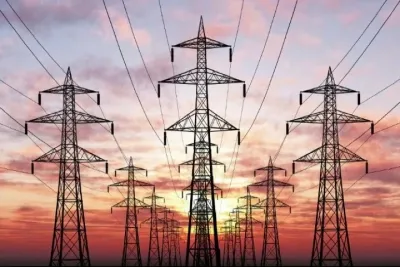Did above-normal monsoon cause a 1.9% drop in India's June power demand?

Synopsis
Key Takeaways
- Power demand in India fell by 1.9% year-on-year in June.
- Above-normal monsoon rainfall contributed to lower temperatures.
- The average MCP dropped by 26% to Rs 3.73 per unit.
- Coal stocks in thermal power plants reached 62 million tonnes, the highest since April 2021.
- The northern region experienced a 5% decrease in demand.
New Delhi, July 9 (NationPress) The power demand in India experienced a decline of 1.9% year-on-year in June, totaling 150 billion units (BUs). This marks the second month in a row of decreasing demand, primarily due to the influence of above-normal monsoon rainfall that has significantly lowered temperatures across much of the country, as reported by Crisil on Wednesday.
During the period from June 1 to 25, India reported a 7% surplus in rainfall compared to the long-term average, a stark contrast to the previous year, which faced an 11% rainfall deficit.
The average market clearing price (MCP) in the real-time market (RTM) also saw a substantial drop, decreasing by 26% to Rs 3.73 per unit in June, reflecting a significant availability of electricity amid weak demand, according to the report.
As a direct consequence of the reduced demand, power generation saw a 0.8% decline, bringing it down to 161 BUs in June.
The northern region of India faced a notable decrease in power demand, dropping by 5% year-on-year, in stark contrast to a 23% increase in June 2024.
The report highlighted that rainfall in the northwest region, which includes northern India as per the India Meteorological Department (IMD), was 37% above normal. This is in stark contrast to June 2024, which experienced heatwaves and rainfall deficits of 33%.
Conversely, the southern region saw a 5.3% increase in power demand year-on-year, correlating with a rainfall deficit of 5% in the southern peninsula this June. Remarkably, the southwest monsoon successfully covered the entire country by June 29, ahead of the usual date of July 8.
The report also pointed out that while rainfall curtailed power demand growth, ongoing manufacturing activity provided some level of support.
Coal remains the dominant fuel for electricity generation in India. As of June 30, thermal power plants reported 62 million tonnes (MT) of coal stocks, marking the highest level since April 2021. This is a significant increase from 47 MT a year earlier. The rise in coal inventory during the month was attributed to lower coal-powered generation, as coal inventory improved to 21 days compared to 16 days in June 2024.










